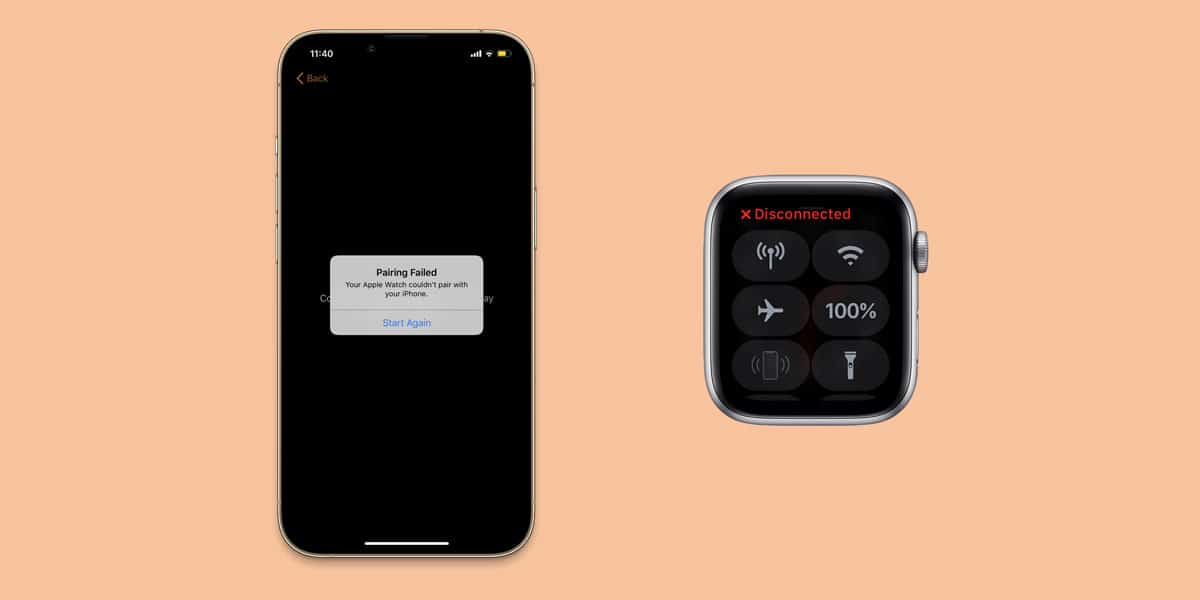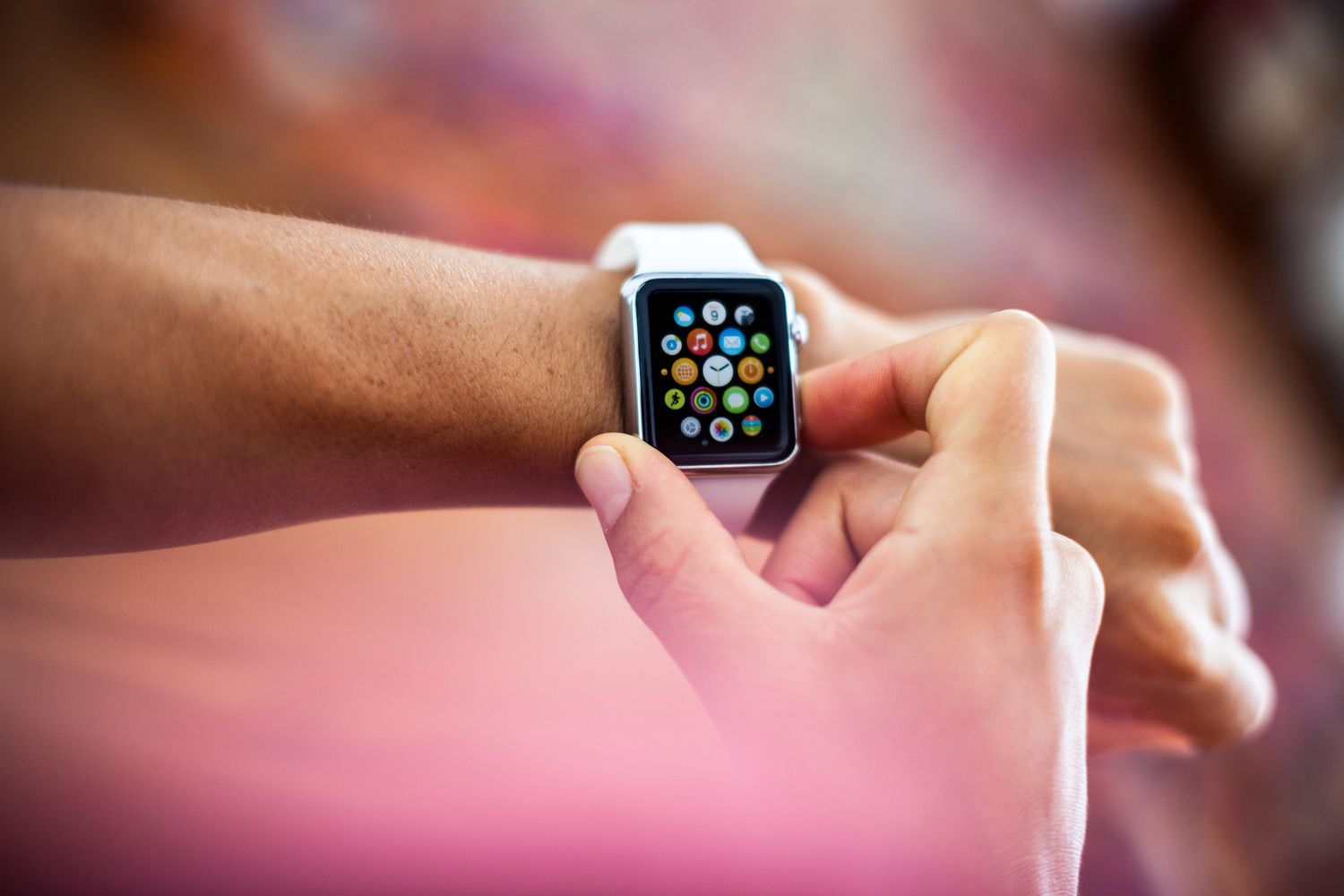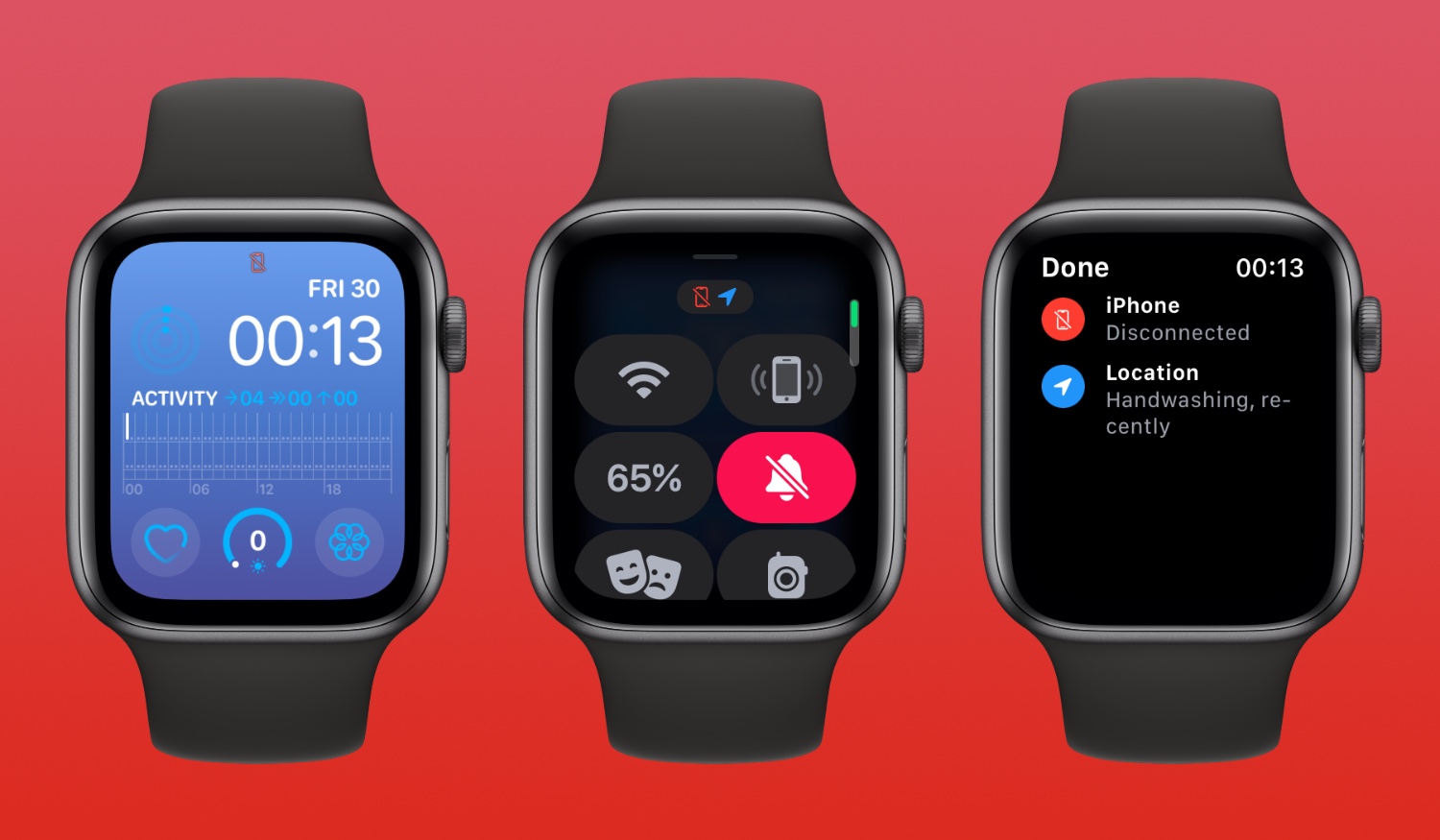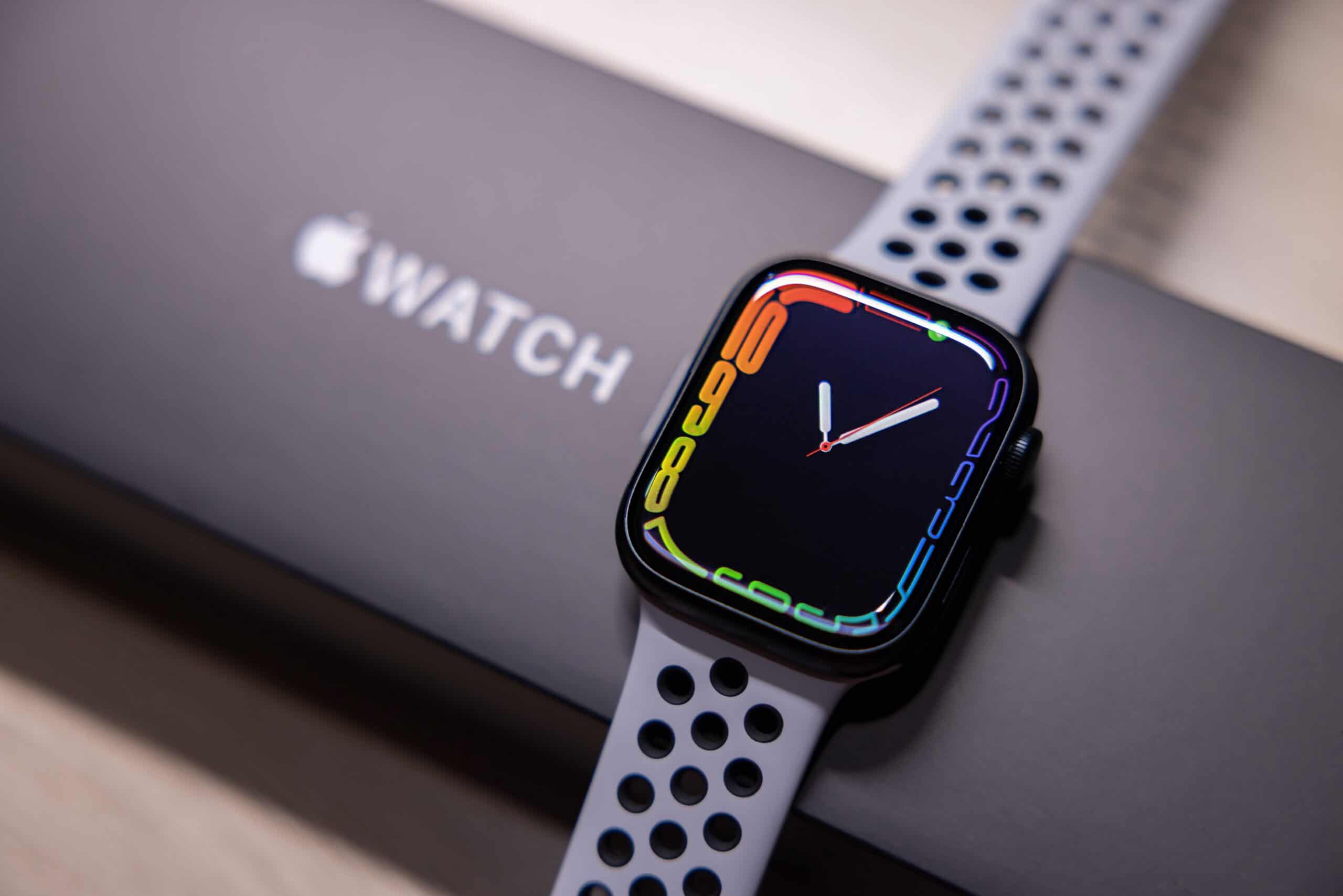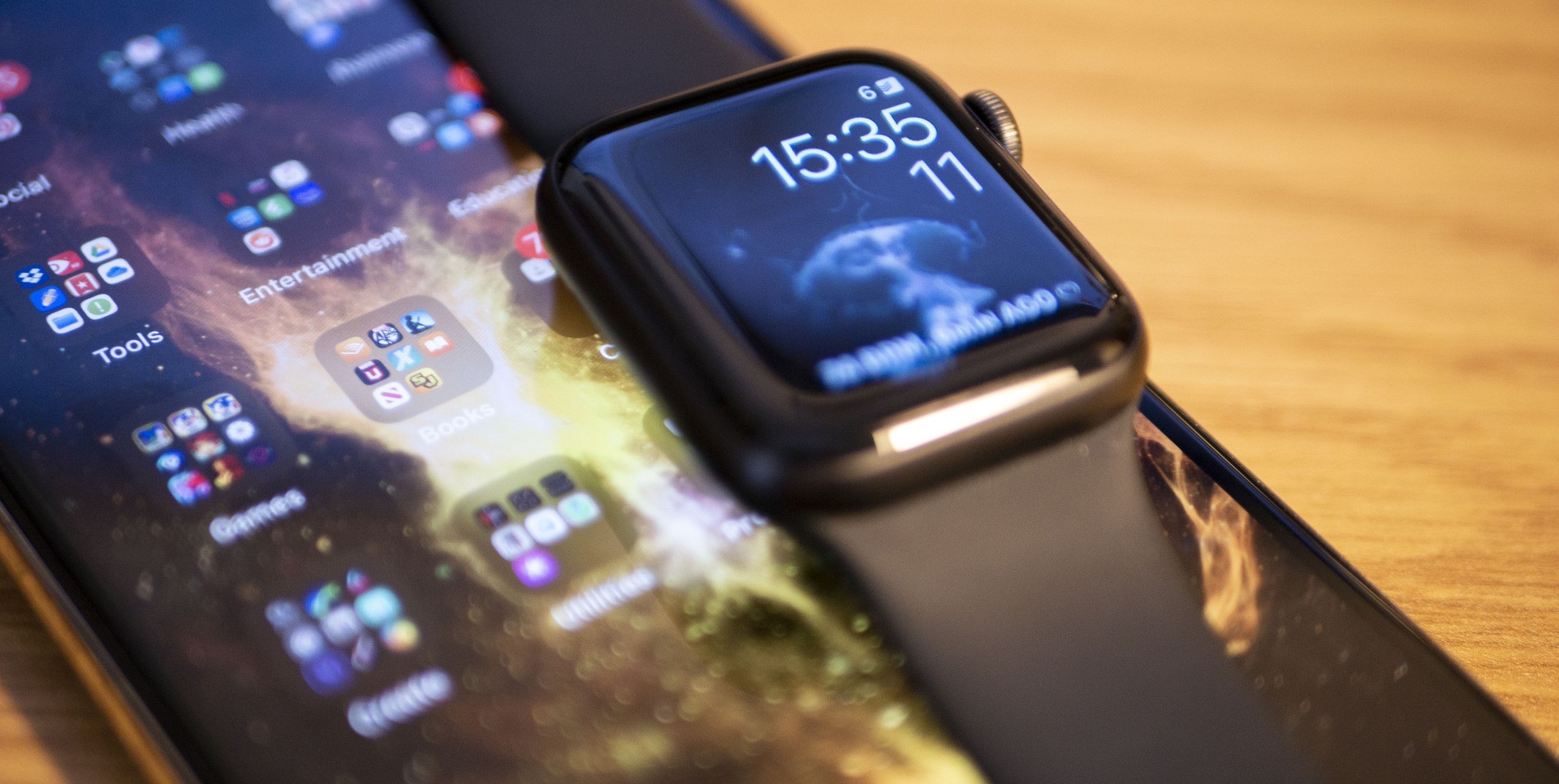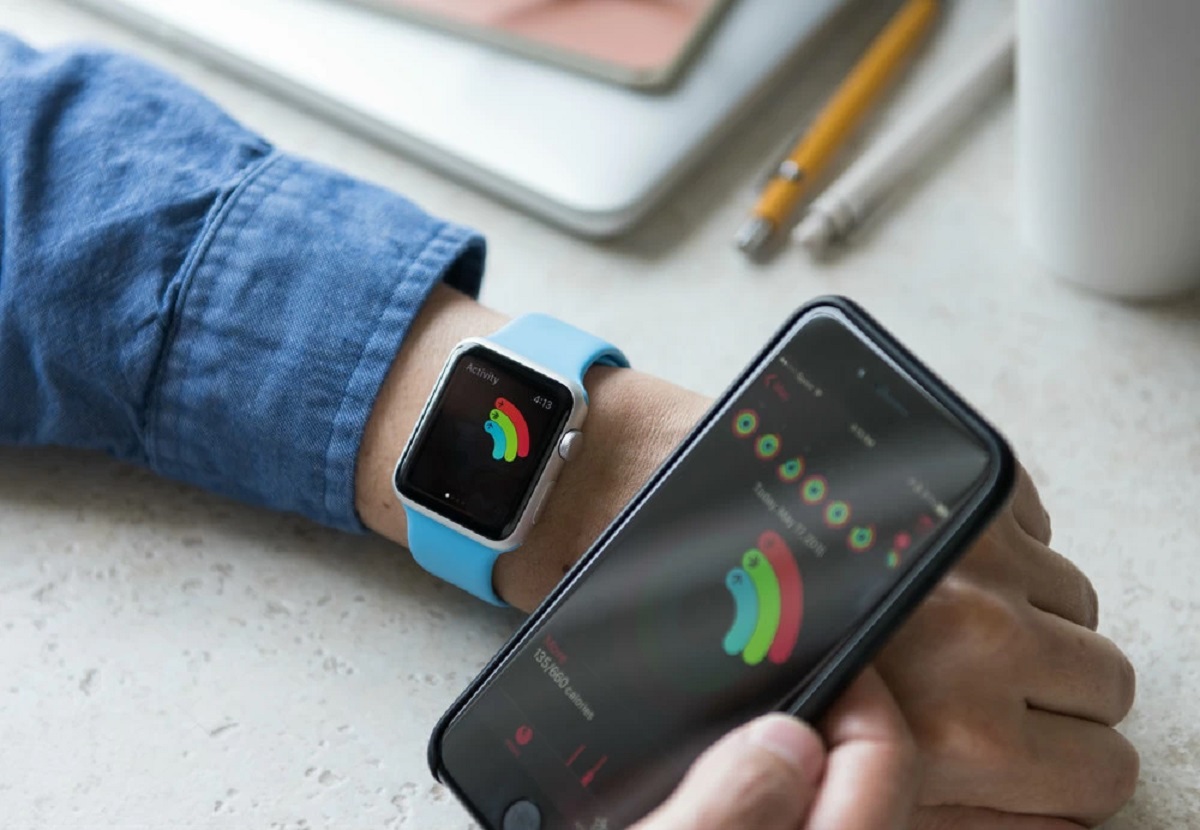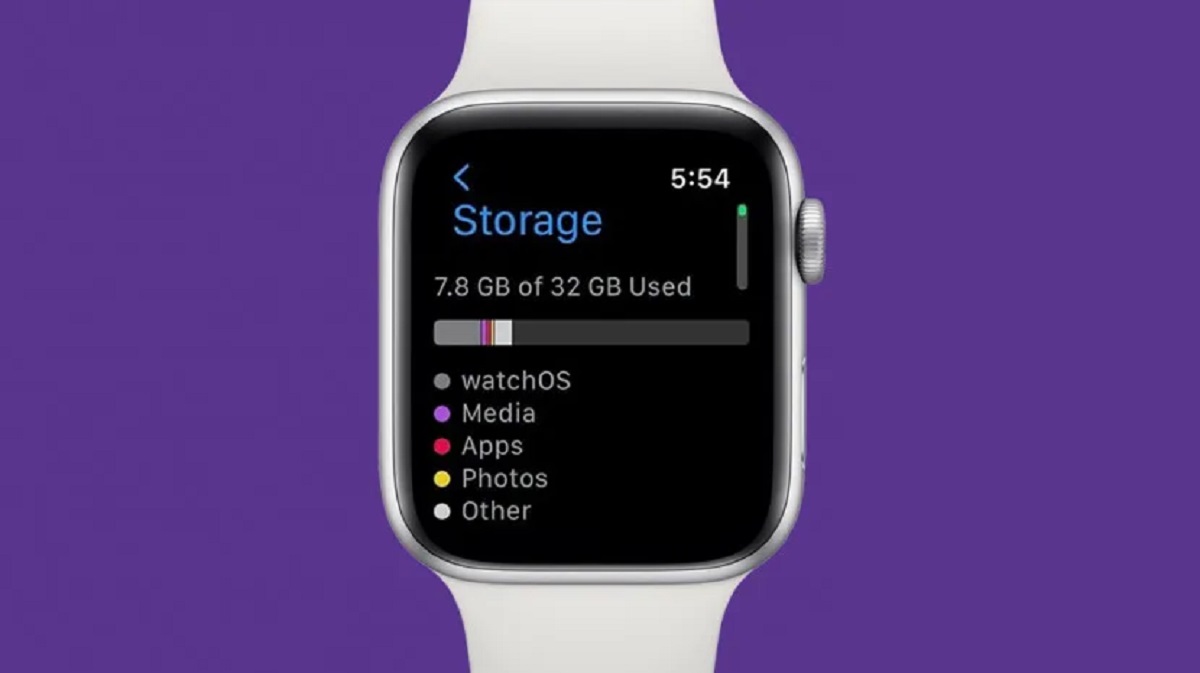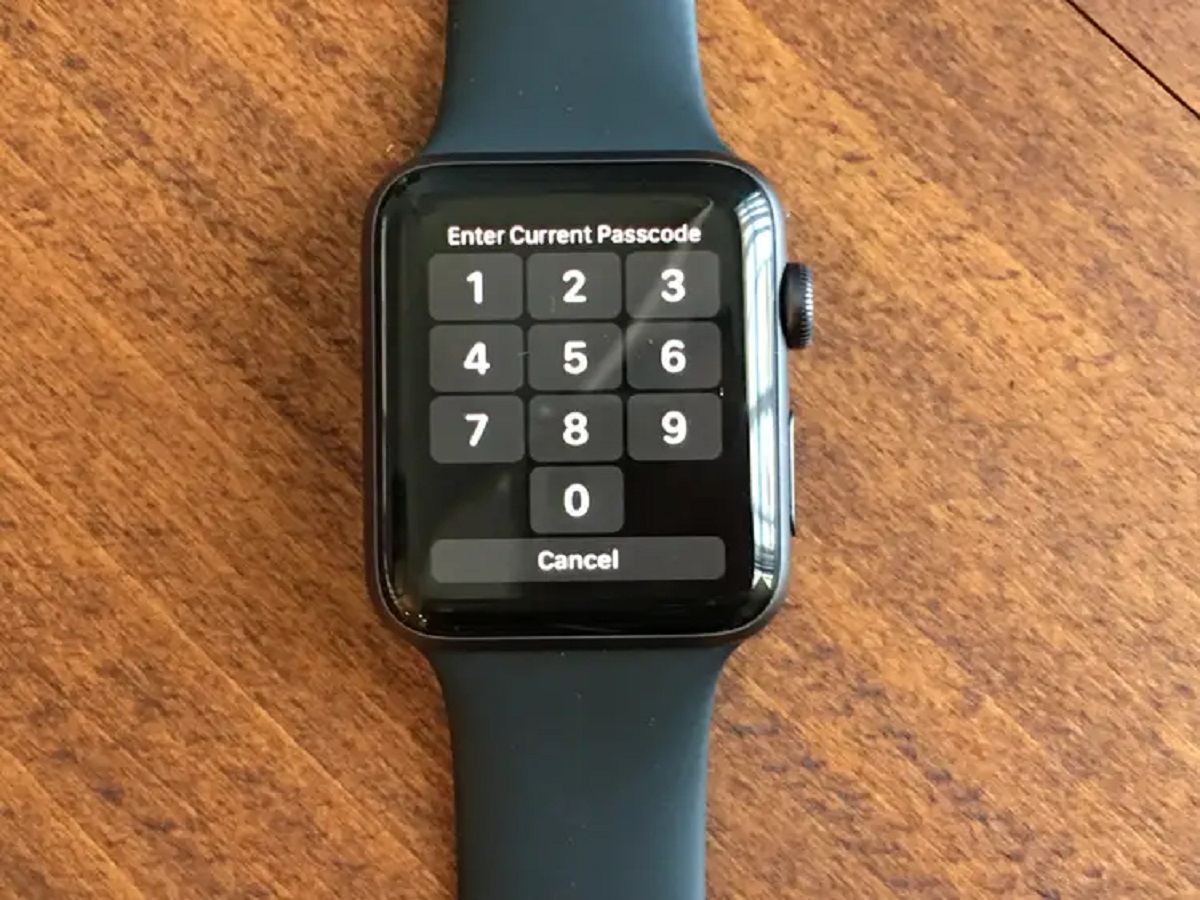Common Reasons Why Your Apple Watch Is Not Pairing
Having trouble pairing your Apple Watch with your iPhone? Don’t worry, you’re not alone. Many Apple Watch users encounter difficulties when trying to establish a connection between their watch and iPhone. Luckily, most of these issues have simple solutions. In this article, we will explore common reasons why your Apple Watch is not pairing and provide troubleshooting tips to help you get your devices connected.
1. Bluetooth Connection Issues: One of the most common reasons why your Apple Watch may not pair with your iPhone is due to Bluetooth connectivity problems. Ensure that Bluetooth is turned on both your iPhone and Apple Watch and that they are within close range of each other. Additionally, check for any Bluetooth interference from other devices and power cycle both devices to reset the Bluetooth connection.
2. Software Issues: Outdated or corrupt software can hinder the pairing process. Make sure that your iPhone and Apple Watch are running on the latest software updates. If necessary, install any available updates and try pairing them again.
3. Low Battery: If either your iPhone or Apple Watch has a low battery, it may prevent the pairing process. Charge both devices to a sufficient level and then attempt to pair them again.
4. Incorrect Wi-Fi Settings: In some cases, incorrect Wi-Fi settings on your iPhone can interfere with the pairing process. Check that your iPhone is connected to a stable Wi-Fi network and try to pair your Apple Watch again.
5. Faulty Hardware: While rare, there is a possibility that either your iPhone or Apple Watch has a hardware issue that prevents them from pairing. If you suspect this is the case, contact Apple Support or visit an authorized service center for assistance.
6. Interference from Other Devices: Other devices, such as fitness trackers or smartwatches, can sometimes interfere with the pairing process. Try disabling or moving any nearby devices and then attempt to pair your Apple Watch again.
7. Apple Watch is in Airplane Mode: If your Apple Watch is in Airplane Mode, it will not be able to pair with your iPhone. Disable Airplane Mode on your Apple Watch and try pairing them again.
8. Incompatible iPhone or Apple Watch model: Ensure that your iPhone and Apple Watch are compatible with each other. Older iPhone models may not support the latest Apple Watch models, and vice versa.
9. Unresponsive Apple Watch or iPhone: If either your Apple Watch or iPhone becomes unresponsive, a simple restart may fix the issue. Try restarting both devices and attempt to pair them again.
10. Resetting and Re-pairing Your Apple Watch: If all else fails, you can try resetting your Apple Watch and then re-pairing it with your iPhone. Be aware that resetting your Apple Watch will erase all data, so make sure to back up any important information beforehand.
By troubleshooting these common issues, you should be able to successfully pair your Apple Watch with your iPhone. If you continue to experience difficulties, don’t hesitate to reach out to Apple Support for further assistance.
Bluetooth Connection Issues
One of the most common reasons why your Apple Watch may not pair with your iPhone is due to Bluetooth connectivity problems. Bluetooth is the technology that enables wireless communication between your devices. When there are issues with the Bluetooth connection, it can prevent your Apple Watch and iPhone from pairing properly.
To troubleshoot Bluetooth connection issues, follow these steps:
1. Ensure Bluetooth is turned on: Check that Bluetooth is enabled on both your iPhone and Apple Watch. On your iPhone, go to Settings > Bluetooth and toggle it on. On your Apple Watch, swipe up on the home screen to access the Control Center and make sure the Bluetooth icon is highlighted.
2. Check the distance between devices: Make sure that your iPhone and Apple Watch are within close range of each other. Bluetooth has a limited range, typically around 30 feet (10 meters). Being too far apart can weaken the Bluetooth signal and hinder the pairing process.
3. Restart your devices: Power cycling your devices can often resolve temporary Bluetooth connection issues. Start by turning off your Apple Watch and iPhone completely. Then, turn them back on and try pairing them again.
4. Check for Bluetooth interference: Other Bluetooth devices in close proximity to your Apple Watch and iPhone can cause interference. Move away from other devices or turn off their Bluetooth functionality temporarily to see if it resolves the issue.
5. Reset network settings: Sometimes, corrupted network settings can affect Bluetooth connectivity. On your iPhone, go to Settings > General > Reset > Reset Network Settings. Note that this will erase saved Wi-Fi passwords, so you will need to re-enter them.
6. Update software: Software updates often fix bugs and glitches that could be causing the Bluetooth connection issues. Ensure that both your iPhone and Apple Watch are running the latest available software. On your iPhone, go to Settings > General > Software Update. On your Apple Watch, go to Settings > General > Software Update.
By following these steps, you can troubleshoot common Bluetooth connection issues and increase the chances of successfully pairing your Apple Watch with your iPhone. If the problem persists, consult Apple Support for further assistance.
Software Issues
Software issues can sometimes interfere with the pairing process between your Apple Watch and iPhone. Outdated software or corrupted system files can prevent a successful connection. To address software issues, follow these troubleshooting steps:
1. Install software updates: Ensure that both your iPhone and Apple Watch are running the latest software updates. Software updates often include bug fixes and improvements that can resolve compatibility issues. On your iPhone, go to Settings > General > Software Update. On your Apple Watch, go to Settings > General > Software Update.
2. Check for app updates: Some apps, especially those that are dependent on the Apple Watch, may require updates to work properly. Check the App Store on your iPhone for any pending app updates. Updating the relevant apps can help resolve software-related issues.
3. Restart your devices: Restarting your Apple Watch and iPhone can clear temporary software glitches. Turn off both devices completely and then turn them back on. After the restart, try pairing them again to see if the software issues have been resolved.
4. Reset settings on your Apple Watch: If you are still experiencing software issues, you can try resetting the settings on your Apple Watch. This will not erase your data, but it will reset all settings to their default values. On your Apple Watch, go to Settings > General > Reset > Reset Settings.
5. Reset settings on your iPhone: In some cases, resetting the settings on your iPhone can help resolve software conflicts that are affecting the pairing process. Go to Settings > General > Reset > Reset All Settings on your iPhone. Note that this action will reset all settings to their default values, so you may need to reconfigure certain preferences.
By addressing software issues through these troubleshooting steps, you can increase the chances of successfully pairing your Apple Watch with your iPhone. If the software problems persist, consider contacting Apple Support for further assistance.
Low Battery
If either your iPhone or Apple Watch has a low battery, it can prevent them from pairing successfully. When the battery level is too low, the devices may not have enough power to establish a stable connection. To troubleshoot low battery issues, follow these steps:
1. Charge your devices: Ensure that both your iPhone and Apple Watch have sufficient battery charge. Connect them to their respective chargers and let them charge for a while. It is recommended to charge them until they reach at least 50% battery level before attempting to pair them.
2. Check the charging cable and adapter: Verify that the charging cable and adapter you are using are in good condition. Damaged or faulty cables/adapters may not provide an adequate charging current, resulting in slower charging times or an inability to charge altogether. Try using a different cable and adapter to see if the issue is resolved.
3. Restart your devices: Sometimes, a simple restart can help resolve low battery issues. Turn off both your iPhone and Apple Watch completely, then turn them back on after a few seconds. This can help reset any temporary battery glitches that may be affecting the pairing process.
4. Use optimized battery charging: If you have iOS 13 or later installed on your iPhone, you can enable the “Optimized Battery Charging” feature. This feature learns your charging patterns and helps slow down battery aging by reducing the time your iPhone spends fully charged. You can enable this feature by going to Settings > Battery > Battery Health > Optimized Battery Charging.
5. Check for battery-intensive apps: Certain apps running in the background of your iPhone or Apple Watch may consume excessive battery power, which can hinder the pairing process. Check for any battery-intensive apps and consider closing them or uninstalling them temporarily to conserve battery life and potentially resolve the pairing issue.
By ensuring that both devices have sufficient battery charge and taking steps to optimize battery usage, you can overcome low battery issues and successfully pair your Apple Watch with your iPhone. If the low battery problem persists, consult Apple Support for further assistance.
Incorrect Wi-Fi Settings
Incorrect Wi-Fi settings on your iPhone can interfere with the pairing process of your Apple Watch. The Wi-Fi connection is used to transfer data between the devices, and if the settings are incorrect, it can prevent proper pairing. To troubleshoot Wi-Fi setting issues, follow these steps:
1. Check Wi-Fi connection: Ensure that your iPhone is connected to a stable Wi-Fi network. Open the Settings app on your iPhone and navigate to Wi-Fi. Make sure your iPhone is connected to a network with a reliable internet connection.
2. Restart your Wi-Fi router: Sometimes, the issue may lie with your Wi-Fi router. Restarting the router can help resolve any temporary glitches. Unplug the power cable from your router, wait for about 30 seconds, and then plug it back in. Allow your Wi-Fi network to reconnect and then attempt to pair your Apple Watch again.
3. Forget Wi-Fi network: If you are experiencing persistent Wi-Fi connection issues, you can try forgetting the Wi-Fi network on your iPhone and then reconnecting to it. Open the Settings app on your iPhone, go to Wi-Fi, tap on the connected network, and select “Forget This Network.” Afterward, reconnect to the network and try pairing your Apple Watch once more.
4. Airplane Mode: Check if Airplane Mode is enabled on your iPhone. When Airplane Mode is turned on, it disables all wireless connections, including Wi-Fi. Disable Airplane Mode in the Control Center on your iPhone to ensure that Wi-Fi is activated.
5. Reset network settings: Resetting network settings on your iPhone can help resolve Wi-Fi-related issues. Open the Settings app, go to General, scroll down to Reset, and select “Reset Network Settings.” Keep in mind that this action will remove all Wi-Fi passwords and VPN settings, so make sure to have them handy to reconnect to your network after the reset.
By ensuring that your Wi-Fi settings are correct and taking the necessary steps to troubleshoot Wi-Fi connection issues, you can increase the chances of successfully pairing your Apple Watch with your iPhone. If the issue persists, consider contacting Apple Support for further guidance.
Faulty Hardware
While not common, there is a possibility that either your iPhone or Apple Watch has faulty hardware, which can prevent them from pairing properly. Hardware issues can range from a malfunctioning Bluetooth module to a damaged Wi-Fi antenna. If you suspect faulty hardware, follow these steps to troubleshoot the problem:
1. Inspect for physical damage: Carefully examine your iPhone and Apple Watch for any signs of physical damage. Look for cracks, dents, or water damage. Physical damage can affect the internal components and lead to pairing issues. If you notice any damage, it may be necessary to have the device repaired or replaced.
2. Clean the contacts: Over time, dirt, dust, and debris can accumulate on the contacts of your iPhone and Apple Watch, affecting their ability to establish a reliable connection. Use a soft, lint-free cloth to clean the contacts on both devices. Be gentle and avoid using any liquids that could damage the devices.
3. Ensure proper hardware functionality: Test the Bluetooth and Wi-Fi functionalities on both your iPhone and Apple Watch. On your iPhone, go to Settings > Bluetooth and Settings > Wi-Fi. Ensure that the Bluetooth and Wi-Fi options are enabled and functioning correctly. On your Apple Watch, swipe up on the home screen to access the Control Center and verify that the Bluetooth and Wi-Fi icons are highlighted.
4. Check for system diagnostics: Both the iPhone and Apple Watch have built-in diagnostic tools that can help identify hardware issues. Contact Apple Support or visit an authorized service center to run diagnostics on your devices. They can provide further assistance in identifying and resolving any hardware-related problems.
5. Contact Apple Support: If you have tried the above steps and suspect that your iPhone or Apple Watch has a hardware problem, it is best to contact Apple Support for further guidance. They can provide specific troubleshooting steps or arrange for repair or replacement if necessary.
Faulty hardware is relatively uncommon, but it can happen. By examining your devices for physical damage, cleaning the contacts, ensuring proper hardware functionality, and seeking assistance from Apple Support, you can determine if there is a hardware issue affecting the pairing of your Apple Watch and iPhone.
Interference from Other Devices
Interference from other devices can sometimes disrupt the pairing process between your Apple Watch and iPhone. Other Bluetooth devices, such as fitness trackers, wireless headphones, or even nearby Wi-Fi routers, can interfere with the Bluetooth signal and hinder successful pairing. To troubleshoot interference issues, follow these steps:
1. Move away from other devices: Physical proximity to other Bluetooth devices can cause interference. Try moving away from any other Bluetooth devices, especially those that are actively connected to your iPhone. Increasing the distance between devices may help eliminate interference.
2. Disable Bluetooth on other nearby devices: If moving away from other devices is not feasible, consider disabling Bluetooth on nearby devices temporarily. This will prevent them from actively searching for Bluetooth connections and reduce the chances of interference.
3. Power cycle interfering devices: Power cycling the interfering devices can sometimes resolve temporary interference issues. Turn off and then turn back on any other Bluetooth devices in the vicinity. This can help reset their Bluetooth connections and reduce interference.
4. Change the position of your devices: The physical positioning of your Apple Watch and iPhone can affect the strength and quality of the Bluetooth signal. Try repositioning your devices to improve signal reception. For example, place your iPhone on a different side of your body or move your Apple Watch closer to your iPhone.
5. Turn off Wi-Fi routers or change Wi-Fi channels: In some cases, Wi-Fi routers operating on the same frequency band as Bluetooth can cause interference. If you suspect this might be the case, try temporarily turning off your Wi-Fi router or changing its channel to minimize interference.
6. Use 5 GHz Wi-Fi frequency: If your Wi-Fi router supports dual-band functionality, consider switching to the 5 GHz frequency band. The 5 GHz band is less crowded than the 2.4 GHz band and may reduce interference with Bluetooth devices.
7. Reset network settings: If interference issues persist, resetting the network settings on your iPhone may help. Go to Settings > General > Reset > Reset Network Settings. Keep in mind that this will remove saved Wi-Fi passwords, so be prepared to reconnect to Wi-Fi networks manually.
By addressing interference issues through these troubleshooting steps, you can minimize the chances of external devices causing disruptions to the pairing process between your Apple Watch and iPhone. If interference problems persist, consult Apple Support for further assistance.
Apple Watch is in Airplane Mode
If your Apple Watch is in Airplane Mode, it will not be able to pair with your iPhone. Airplane Mode disables all wireless connections on your Apple Watch, including Bluetooth and Wi-Fi. While Airplane Mode is useful during flights, it can prevent the pairing process from being successful. To resolve this issue, follow these steps:
1. Disable Airplane Mode: On your Apple Watch, swipe up on the home screen to access the Control Center. Ensure that the Airplane Mode icon is not highlighted. If it is, tap on the Airplane Mode icon to disable it. This will enable Bluetooth and Wi-Fi on your Apple Watch.
2. Restart your Apple Watch: Sometimes, a simple restart can help resolve temporary software glitches that may be preventing the Apple Watch from coming out of Airplane Mode. Power off your Apple Watch, wait a few seconds, then power it back on. Once your watch has restarted, attempt to pair it with your iPhone again.
3. Check your iPhone settings: On your iPhone, open the Control Center by swiping down from the top-right corner (or up from the bottom on older iPhone models). Ensure that Airplane Mode is disabled. If it is enabled, tap on the Airplane Mode icon to turn it off. This will allow your iPhone to establish a connection with your Apple Watch.
4. Reset network settings: If the issue persists, resetting network settings on your iPhone may help. Open the Settings app on your iPhone, go to General, scroll down to Reset, and select “Reset Network Settings.” Remember that this will remove all saved Wi-Fi passwords, so make sure to have them handy to reconnect to your Wi-Fi network after the reset.
5. Update software: Ensure that both your iPhone and Apple Watch have the latest software updates installed. Software updates often include bug fixes and improvements that can address connectivity issues. On your iPhone, go to Settings > General > Software Update. On your Apple Watch, go to Settings > General > Software Update.
By checking and disabling Airplane Mode, restarting your Apple Watch, ensuring the correct settings on your iPhone, updating software, and resetting network settings if necessary, you can resolve the issue of your Apple Watch being stuck in Airplane Mode and successfully pair it with your iPhone.
Incompatible iPhone or Apple Watch Model
One potential reason your Apple Watch is not pairing with your iPhone is because they are not compatible due to differences in their models. Apple Watch models support specific iPhone models, and using an incompatible combination can result in pairing issues. To address this problem, consider the following steps:
1. Check compatibility: Verify that your iPhone and Apple Watch models are compatible with each other. Apple provides a comprehensive list of compatible iPhone and Apple Watch models on their website. Make sure your devices match the compatibility requirements.
2. Verify software compatibility: Even if your iPhone and Apple Watch models are compatible, they may require specific software versions to pair correctly. Ensure that both devices are running the latest software updates available. On your iPhone, go to Settings > General > Software Update. On your Apple Watch, go to Settings > General > Software Update.
3. Update iOS on older iPhones: If you have an older iPhone model that is compatible with your Apple Watch, but you are unable to update to the latest iOS version, it may result in pairing issues. Some Apple Watch features require specific iOS versions. Consider updating your iPhone to the highest iOS version available for your model.
4. Update watchOS on older Apple Watch models: If you have an older Apple Watch model, ensure that it is running the latest watchOS version. Updating the watchOS software can sometimes improve compatibility and resolve pairing issues. On your iPhone, open the Apple Watch app, go to My Watch, and then select General > Software Update.
5. Reset and retry: If you have confirmed that your iPhone and Apple Watch models are compatible but are still experiencing pairing issues, try resetting both devices. Restart your iPhone by turning it off and on again, and restart your Apple Watch by powering it off and on. Then attempt the pairing process again.
If you have confirmed that your iPhone and Apple Watch models are indeed incompatible, you may need to consider upgrading to a compatible model. If you are unsure about compatibility or need further assistance, reach out to Apple Support for guidance on the best course of action.
Unresponsive Apple Watch or iPhone
If either your Apple Watch or iPhone becomes unresponsive, it can hinder the pairing process between the two devices. Unresponsiveness may be caused by various factors, such as software glitches or hardware issues. To troubleshoot unresponsive Apple Watch or iPhone problems, try the following steps:
1. Restart your Apple Watch or iPhone: A simple restart can often resolve temporary glitches and restore responsiveness. For your Apple Watch, press and hold the side button until the power off slider appears. Drag the slider to turn off your watch, then press and hold the side button again until the Apple logo appears. For your iPhone, press and hold the power button (or the side button on iPhone X or later) until the power off slider appears. Drag the slider to turn off your iPhone, then press and hold the power button again until the Apple logo appears.
2. Force restart your Apple Watch or iPhone: If a normal restart doesn’t work, you can try force restarting your device. For an Apple Watch, press and hold both the side button and the digital crown until the Apple logo appears. For an iPhone, follow these steps depending on your model:
- iPhone 8 or later: Press and quickly release the volume up button, then press and quickly release the volume down button. Finally, press and hold the side button until the Apple logo appears.
- iPhone 7 or 7 Plus: Press and hold both the volume down button and the side button until the Apple logo appears.
- iPhone 6s or earlier, iPod touch, or iPad: Press and hold both the home button and the top or side button until the Apple logo appears.
3. Check for software updates: Ensure that your Apple Watch and iPhone have the latest software updates installed. Software updates often include bug fixes and improvements that can address unresponsiveness issues. On your iPhone, go to Settings > General > Software Update. On your Apple Watch, go to Settings > General > Software Update.
4. Reset settings: If your Apple Watch or iPhone remains unresponsive, you can try resetting the settings. Note that this action will not erase your data, but it will revert settings to their default values. On your Apple Watch, go to Settings > General > Reset > Reset Settings. On your iPhone, go to Settings > General > Reset > Reset All Settings.
5. Contact Apple Support: If the above steps do not resolve the unresponsiveness issue with your Apple Watch or iPhone, it may be necessary to seek assistance from Apple Support. They can provide further troubleshooting steps or guide you through the process of resolving any potential hardware problems.
By following these troubleshooting steps, you can attempt to resolve unresponsiveness issues with your Apple Watch or iPhone and improve the chances of successfully pairing the two devices.
Resetting and Re-pairing Your Apple Watch
If all else fails, you can try resetting your Apple Watch and then re-pairing it with your iPhone. This process can resolve stubborn pairing issues and help establish a fresh connection between the devices. Here’s what you need to do:
1. Unpair your Apple Watch: On your iPhone, open the Apple Watch app and go to the My Watch tab. Tap on your Apple Watch, then select the “i” icon next to it. Choose “Unpair Apple Watch” and confirm the action. This will remove your Apple Watch from your iPhone’s Bluetooth settings.
2. Reset your Apple Watch: On the Apple Watch, go to Settings > General > Reset. Choose “Erase All Content and Settings” and follow the prompts to confirm. This will erase all data from your Apple Watch and reset it to its factory settings.
3. Re-pair your Apple Watch: Place your Apple Watch and iPhone close to each other. Turn on your Apple Watch by pressing and holding the side button until the Apple logo appears. On your iPhone, open the Apple Watch app and tap “Start Pairing.” Follow the on-screen instructions to re-pair your Apple Watch with your iPhone.
4. Restore or set up your Apple Watch: After the re-pairing process, you will have the option to restore your Apple Watch from a backup or set it up as new. If you choose to restore from a backup, make sure to select the most recent backup available. This will restore your previous settings, apps, and data. If you select to set up as new, you will start with a fresh setup and need to reconfigure your settings and install apps manually.
5. Test the connection: Once your Apple Watch is re-paired with your iPhone, test the connection by using various features and functionalities. Ensure that notifications, apps, and other interactions are working as expected. If any issues persist, consider restarting both devices and repeating the process from step 1.
Resetting and re-pairing your Apple Watch can be a more drastic troubleshooting step, but it can be effective in resolving persistent pairing issues. Remember to back up any important data before initiating the reset. If the problem continues, contacting Apple Support might provide further assistance.







